Key takeaways
- Zoom enhances global collaboration for songwriting, allowing artists to connect with diverse perspectives and capture spontaneous ideas through recording features.
- Technical setup, including good microphones and stable internet, significantly improves the quality of remote sessions, fostering clearer communication and creativity.
- Setting clear session goals and utilizing screen sharing can enhance focus and engagement, making the virtual songwriting process more productive.
- Despite challenges like audio latency and screen fatigue, the visual connection through Zoom can spark new ideas and keep creativity flowing.
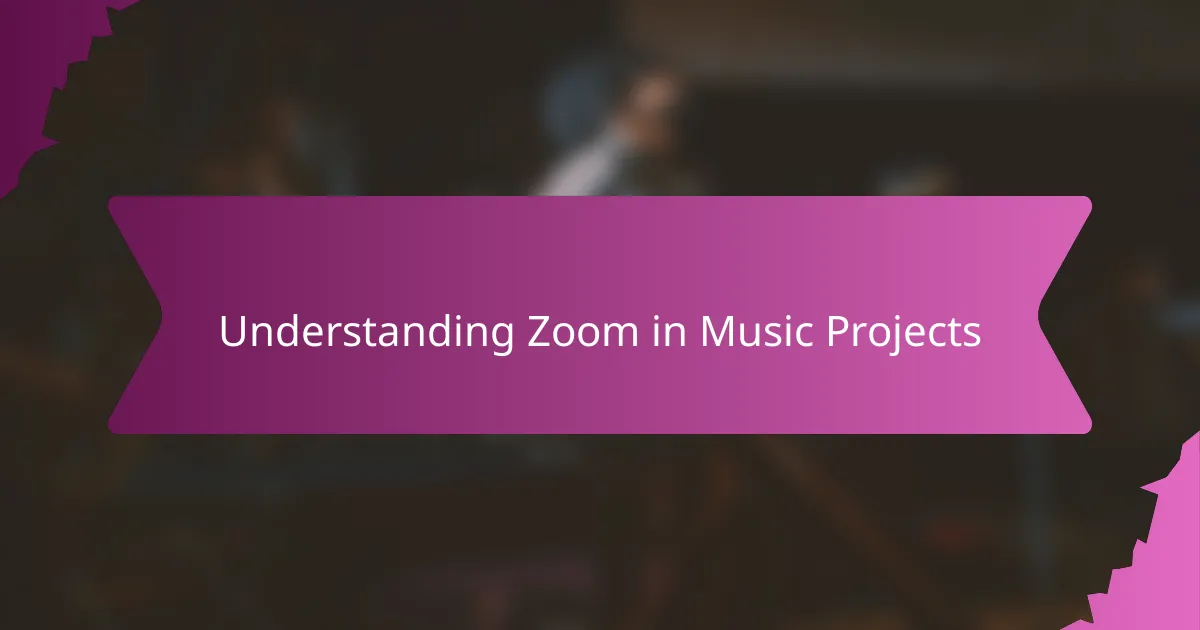
Understanding Zoom in Music Projects
When I first started using Zoom for songwriting sessions, I was curious about how well it could capture the collaborative spirit that usually thrives in a shared physical space. It quickly became clear that understanding the platform’s capabilities—and its limitations—was crucial for making the most out of our remote music projects. Have you ever wondered how a simple video call can foster creative energy, or sometimes disrupt it?
From my experience, hearing the slight audio delays and occasional dropouts forced us to adapt our creative process. We had to learn how to listen more attentively and communicate more clearly, which actually deepened our connection in unexpected ways. It made me realize that mastering Zoom isn’t just about technical know-how; it’s about reshaping how we collaborate and express ourselves musically.
I also noticed that Zoom’s visual element added a new dimension to songwriting. Seeing each other’s expressions in real-time helped fill some of the emotional gaps left by distance. This visual feedback created a surprisingly intimate environment, reminding me that even through screens, music has a powerful way to bridge gaps and bring people closer.
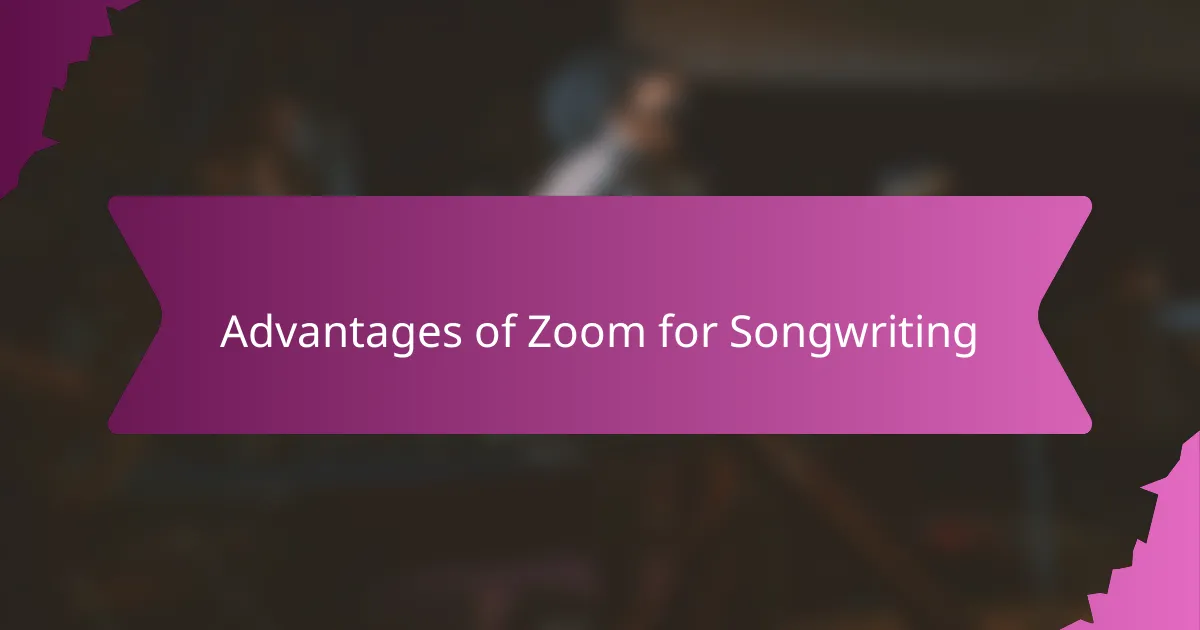
Advantages of Zoom for Songwriting
One thing I’ve really appreciated about using Zoom for songwriting is how effortlessly it connects collaborators from all over the world. Isn’t there something special about jamming with someone thousands of miles away without leaving your room? This accessibility opened doors to fresh perspectives and voices I might never have encountered otherwise.
Another advantage I found is the ability to record our sessions directly through Zoom, which proved invaluable for capturing spontaneous ideas. Have you ever had that perfect lyric or melody slip away because you didn’t jot it down fast enough? With Zoom’s recording feature, I could revisit every nuance and build on our work more thoughtfully.
I also found that the platform’s chat function became a surprisingly useful tool during sessions. When technical hiccups interrupted the audio, quickly typing suggestions or sharing links kept the creative flow going. It showed me that sometimes, adapting to new communication styles can actually enhance collaboration rather than hinder it.
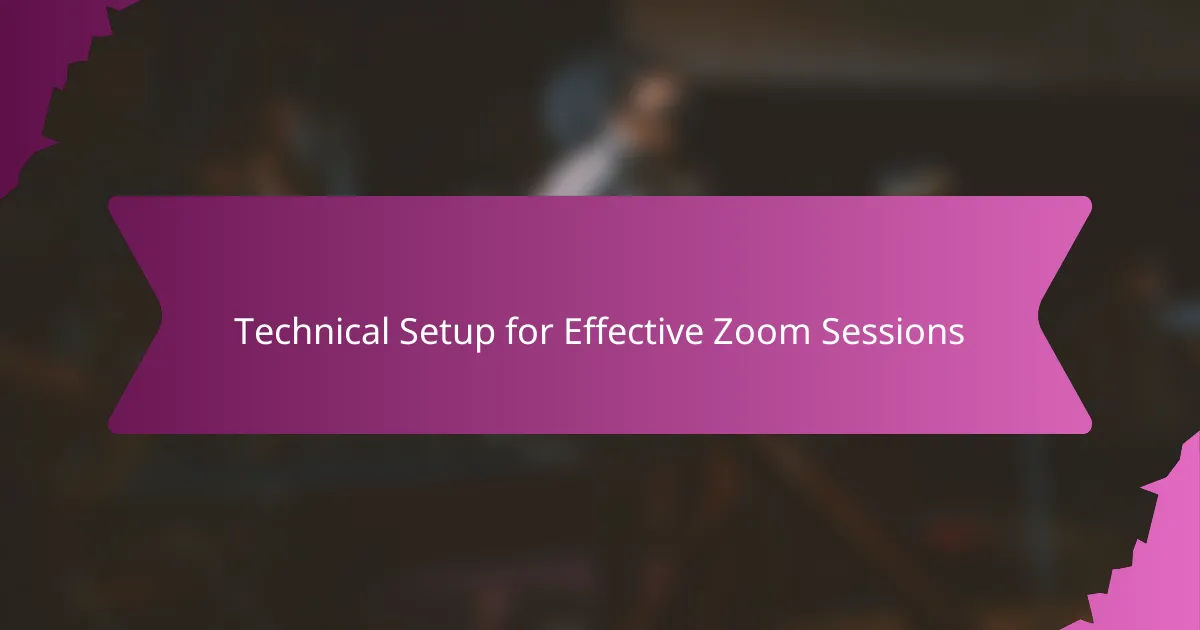
Technical Setup for Effective Zoom Sessions
Setting up the right technical environment for Zoom sessions is something I’ve learned the hard way. Early on, I underestimated how much a good microphone could improve not just clarity but the overall vibe of our songwriting. Have you ever struggled to catch someone’s subtle vocal phrasing because the audio was muddy or distorted? Investing in even a basic USB mic transformed those sessions into more productive and enjoyable experiences.
Another detail I pay close attention to is the internet connection. When I experienced lag or dropouts, it wasn’t just frustrating—it broke the creative flow. Making sure everyone has a stable and fast connection is essential, but I also remind collaborators to close unnecessary apps and use wired connections when possible. These simple steps have saved us from countless interruptions.
Finally, I can’t stress enough how helpful it is to customize Zoom’s audio settings for music. By turning off noise suppression and enabling “Original Sound,” I noticed a big difference in how instruments and vocals came through. This tweak made our virtual rehearsals feel more like being in the same room, which brought back some of that spontaneous magic that’s so vital for songwriting.
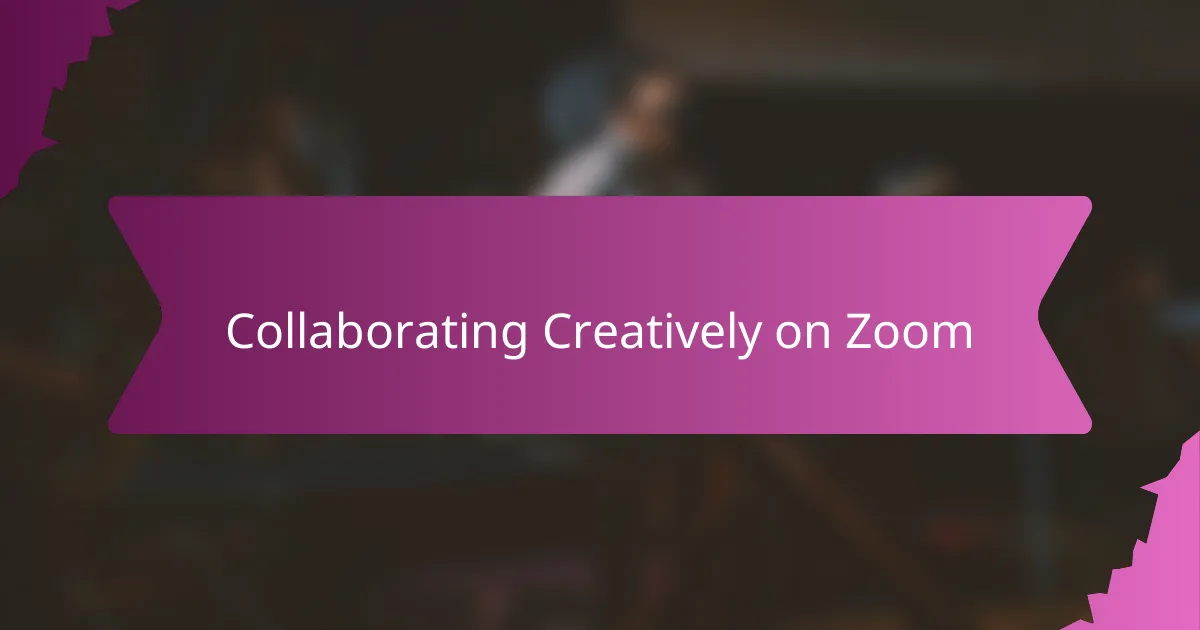
Collaborating Creatively on Zoom
Collaborating creatively on Zoom felt like stepping into a new musical landscape for me. Have you ever tried to catch the spark of an idea when there’s a slight delay in response? At first, it was tricky, but I found that those pauses actually gave us space to reflect, leading to richer, more thoughtful contributions.
I also realized that Zoom encourages a kind of intentional listening I hadn’t practiced before. When a collaborator shares a melody or lyric over the screen, you focus differently—every nuance counts because the connection isn’t physical. That focus deepened our creative dialogue and brought an unexpected intimacy to our songwriting.
Sometimes, the spontaneity that happens around a shared instrument shifts when you’re not in the same room. Yet, I learned to turn this limitation into an advantage by using Zoom’s breakout rooms and screen sharing to brainstorm and share ideas in small, dynamic bursts. Have you noticed how breaking down sessions into focused moments can actually fuel creativity rather than stifle it?
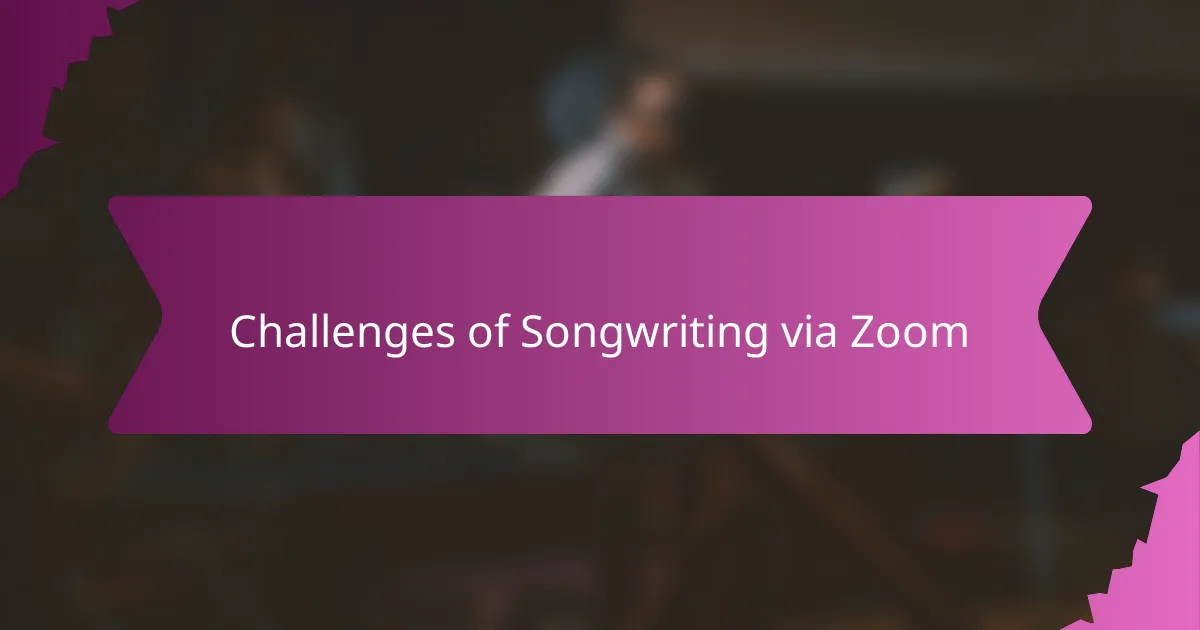
Challenges of Songwriting via Zoom
One of the biggest challenges I faced with Zoom was the unavoidable audio latency—it felt like trying to catch a beat that kept slipping away. Have you ever tried to harmonize or jam when voices are slightly out of sync? That delay made real-time collaboration tough, forcing us to rethink how we paced our sessions and communicated ideas.
Another difficulty was the lack of true audio fidelity. Even with good microphones, Zoom compresses sound to save bandwidth, which sometimes flattened the warmth or subtlety in our music. It felt frustrating, like singing through a thin veil, and made me miss the richness of being in the same room with my bandmates.
Then there’s the challenge of staying present and focused while staring at screens for extended periods. I found that the usual energy of a face-to-face session often drained away into the background noise of daily life. How do you keep the creative spark alive when distractions are just a click away? For me, it meant carving out intentional time and mindset, but it’s definitely a hurdle that Zoom doesn’t fully solve.
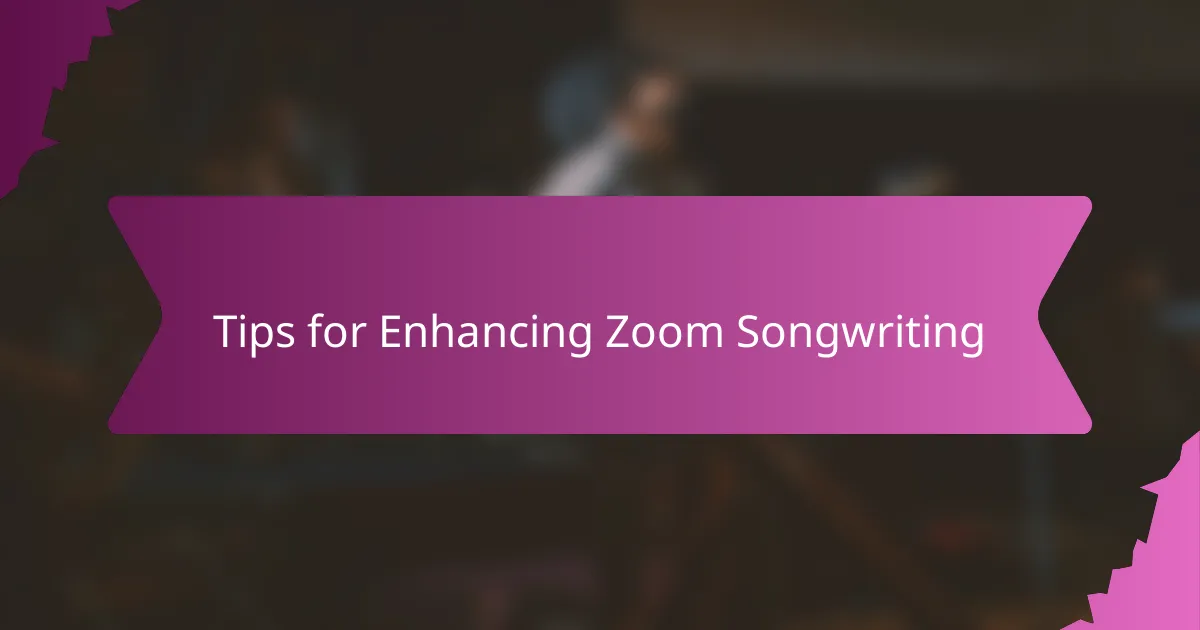
Tips for Enhancing Zoom Songwriting
One thing that really helped me was setting clear goals before each Zoom session. Have you ever jumped into a call without a plan and ended up chasing too many ideas at once? Having a simple agenda—even if it’s just deciding to focus on lyrics or chord progressions first—gave our sessions a clear direction and kept the creative energy flowing without feeling scattered.
I’ve also found that using Zoom’s screen sharing to display lyric sheets or chord charts makes a huge difference. It’s such a small thing, but seeing everything in one place helped us stay on the same page, literally. Plus, when I shared my screen, I noticed that my collaborators felt more involved; it created a sense of shared workspace that I missed from in-person rehearsals.
Another tip I swear by is taking regular breaks during longer Zoom songwriting sessions. Have you experienced Zoom fatigue that kills your inspiration? Breaking up the time allowed us to reset and come back refreshed, which made our ideas sharper and our conversations more engaging. It also gave me space to jot down new thoughts without rushing, something that feels easier when you’re not glued to the screen nonstop.
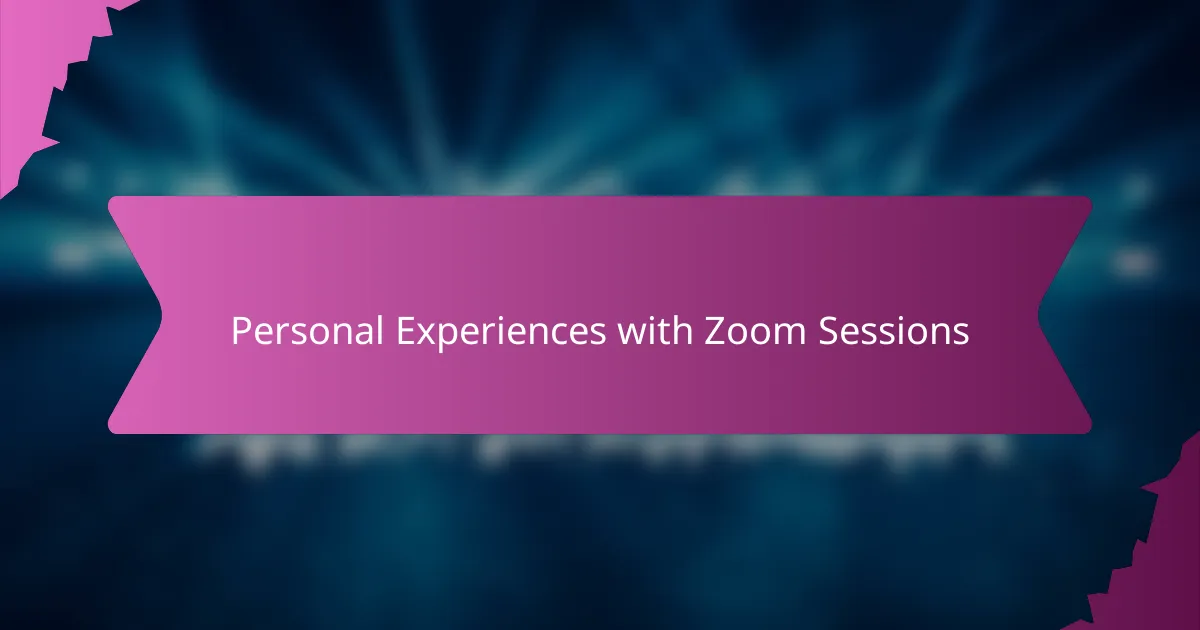
Personal Experiences with Zoom Sessions
In my early Zoom songwriting sessions, I often felt a mix of excitement and frustration. I remember one night when a connection glitch cut out just as we hit a sweet melodic harmony—it was maddening but also oddly memorable. Have you ever experienced that moment when technology both connects and interrupts your creative flow? It taught me patience and the value of embracing imperfection in remote collaboration.
Sometimes, I found that seeing the faces of my co-writers through Zoom brought unexpected warmth to our sessions. I’d catch a smile or a furrowed brow that sparked new ideas or a fresh angle on a lyric. That visual connection helped me feel less isolated, even when we were miles apart, and reminded me how crucial human presence is, even on a screen.
Of course, not every session was smooth sailing. I once lost track of an inspired verse because the audio cut out mid-performance, and we had to piece it together afterwards like musical detectives. Moments like that underscored how much I had to adapt my workflow—recording more, double-checking ideas, and sometimes improvising around technical hiccups. It’s a learning curve, but one that ultimately deepened my appreciation for both the challenges and rewards of Zoom collaboration.